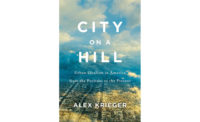Finding the delicate balance between tradition and innovation.
A friend who recently returned from China remarked that the country reflects the past, present, and future, all at the same time. In smog-choked Beijing, where the 15th-century Temple of Heaven is still a beloved and much-visited oasis, the eye-popping, epic-scale works of contemporary architecture—the CCTV headquarters by OMA, the Bird’s Nest by Herzog & de Meuron—announce that the future is already here.

But the latest Pritzker laureate, Chinese architect Wang Shu, has some issues with that future, and he used his platform during the award ceremony in Beijing a month ago to criticize the way his country has responded to economic growth, questioning the sweeping “demolition and new construction” in its rapidly expanding cities and the reliance on “gigantic and iconic architecture.” Citing Wang for architecture with a “strong sense of cultural continuity and reinvigorated tradition,” the Pritzker jury seemed to concur—though the prize has been awarded in the past to designers most famous for the kind of iconic buildings Wang decried. Some of those architects, including Frank Gehry, Zaha Hadid, and Jean Nouvel, were in the audience listening to Wang speak.
Traditional or radical? Those choices are fraught and usually complex. In Beijing, the destruction of hutongs—the narrow alleys lined with traditional courtyard houses—in favor of the soulless sprawl of high-rise apartment towers is a cultural loss, which Wang would understandably deplore. Yet as charming as those hutong houses might seem, most failed to provide such basic amenities as modern plumbing.
And the problems of housing China’s exploding urban population are on a scale never seen in human history. Architects are at the epicenter of these dilemmas and, at their best, try to navigate between respecting the past and embracing the future. Yet tensions over how to strike such a delicate balance keep cropping up.
In Washington, D.C., those who favor traditional design are declaring a momentary victory in their opposition to the proposed Eisenhower Memorial designed by Gehry. The bipartisan Eisenhower Memorial Commission, which has unanimously supported the design, is now delaying the approval process. While some members of the Eisenhower family have expressed dissatisfaction with aspects of Gehry’s scheme, an organization called the National Civic Art Society wants to derail the design entirely. According to its website, the “Society will continue to seek the restoration of the classical tradition to its rightful primacy in our nation’s capital.” The memorial as planned, says the site, “would be an uncivil, brutal insult to the classical city envisioned by Pierre L’Enfant and our nation’s Founders.”
Interpreting our founders’ convictions as extending to 21st-century design is an astonishing exercise in fantasy; most of the founding fathers were radicals, at least in politics, in their day. But the leaders of the National Civic Art Society are clever at portraying themselves as the outliers now, terming their movement for classical architecture antielitist and the “new counterculture.”
In this issue of record, we showcase architecture that we think is antielitist, through the ingenious use of humble materials in projects that reflect artful mediation between tradition and innovation. In Cartagena, Spain—a onetime Roman port with a long history visible in its ancient amphitheater and centuries-old ramparts—a seaside congress center has been created almost entirely of gorgeously colorful plastic, in a form that echoes the shipping containers on neighboring wharves. And in another locale with Roman roots—Alise-Sainte-Reine, France—a drum-shaped building, cloaked in larch wood strips, commemorates the site as the place where Julius Caesar finally defeated the Gauls to expand his empire.
Between that distant past and an unknowable future, the present is always a good place to land. And while the greatest architecture conveys an aura of timelessness, it also reflects the authenticity of its own time and place.







